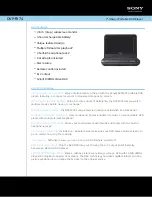
22
Gas Powered 3-in-1 Compressor / Generator / Welder
Unpacking
Unpacking your EGES14020T, check it thoroughly
for any damage that it may have incurred in transit.
Be sure all fittings, bolts, etc. are present, as well as
tight and secure.
Do not operate this equipment
if any damage is discovered.
Lifting this equipment
1. Carefully inspect all lifting equipment and make
sure it is in good condition. Rated capacity for
each component should exceed compressor
weight of 550 lb. (249.5 kg).
2. Use chains or cables with shackles to attach them
to the three compressor lifting point eyebolts (Y,
fig.1 and fig.2).
fig.7 Set-up for lifting and lowering
3. The three slings should each be long enough
that their angle when gathered at the top should
ideally be greater than 60° to the horizontal.
4. Make sure lifting point eyebolts are in good
condition and tighten any loose nuts or bolts
before lifting.
60° +
60° +
Make sure to use all three
lifting hooks while lifting the
compressor-welder. Failure to do this can
cause injury.
5. The lifting hook must have a functioning safety
latch or equivalent.
6. Attach a guide rope to prevent the unit rotating
when the lift is in the air. Getting too close to
steady it by hand exposes you to danger should
it fall.
7. Increase the strain on the slings and lifting points
slowly and evenly. Be sure to keep the unit
horizontal when lifting.
Pre-operation set-up
Placement
Locate the unit as close to where air, electrical
power, or welding is needed as is practical,
while keeping in mind the dangers and cautions
presented in the preceding safety sections.
Install this unit in a clean, dry and well-lit
area. Be sure installation area can maintain a
temperature range between 35º and 110º F (2º
and 43º C).
The maximum allowable angle of operation for
the engine is 25°
If the compressor is to be connected to a network of
piping to carry compressed air, set up that system
with the following in mind:
1.
INSTALL APPROPRIATE FLOW-LIMITING
VALVES
as necessary according to pipe size(s)
used and run lengths. This will reduce pressure
in case of hose failure, per OSHA Standard 29
CFR 1926.302(b)(7).
2.
FLOW-LIMITING VALVES ARE LISTED
BY PIPE SIZE AND RATED CFM.
Select
appropriate valves accordingly, in accordance
with the manufacturer’s recommendations.
3.
PLACE FEET ON 1/4” (6 mm) THICK
RUBBER PADS.
Thicker padding will increase
vibration and the possibility of cracking the tank
or other unit damage. Do not place unit on dirt
floor or uneven surface.
Do not install rubber feet adjacent
to wheels if compressor is used in
portable applications.
4.
FASTEN ANCHOR BOLTS SNUGLY BUT DO
NOT OVERTIGHTEN
so normal vibration will
not damage unit.
This unit is somewhat top
heavy and should be bolted
to solid, flat surface to avoid falling and
premature pump wear. Splash lubrication
will not operate properly if unit is not level.
5.
USE A FLEXIBLE CONNECTOR
between compressor tank and any piping system
to minimize noise, vibration, unit damage, and
pump wear.
NOTICE










































